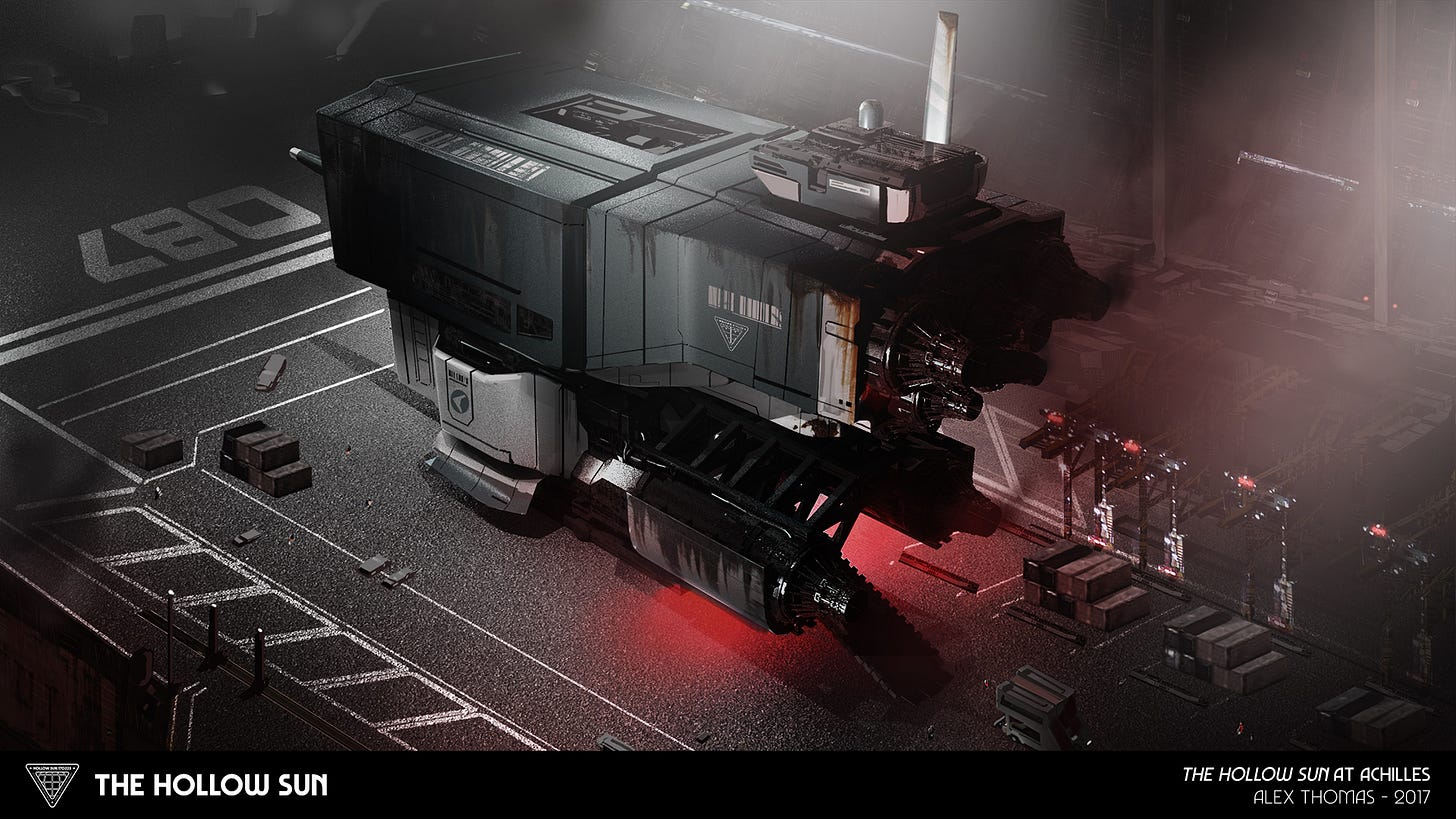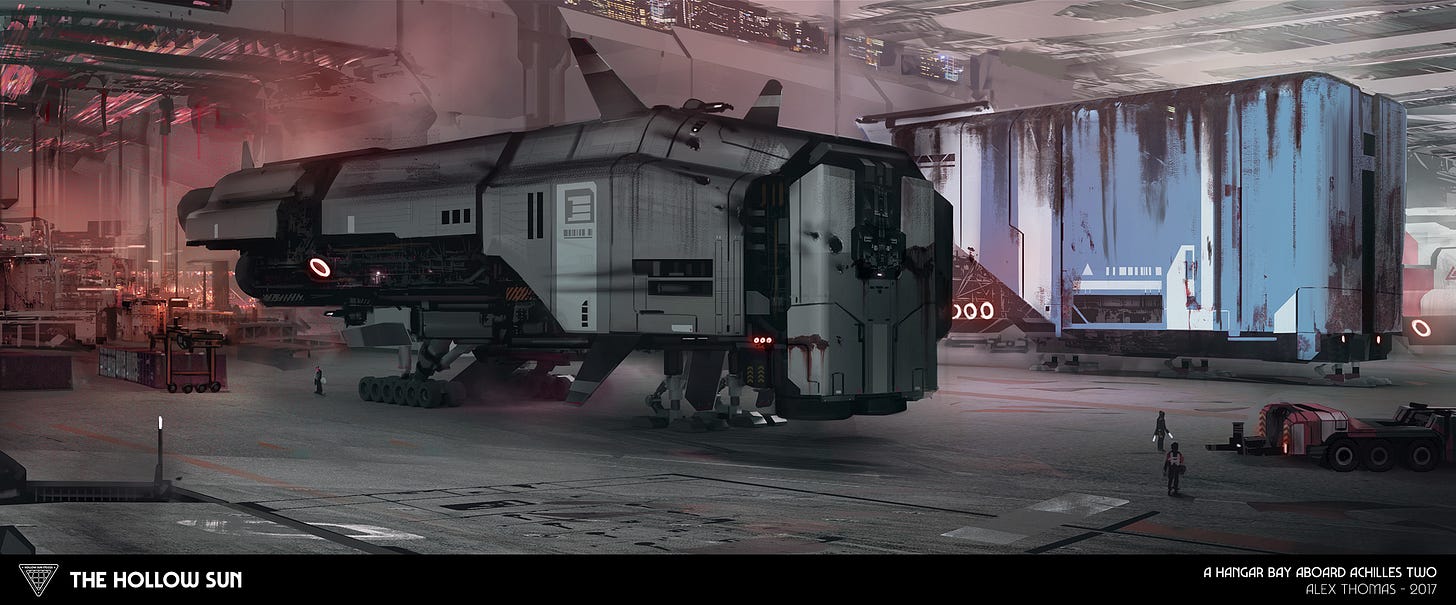Though months and years had passed since I completed the short film and new feature length screenplay of The Hollow Sun, the story persisted in my mind. Phil Lambert (my Director of Photography) and I had come up with a number of new stories in the years after we made The Hollow Sun, and though I can’t recall which one of us had the idea first, we both decided at some point it would be fun to try to novelize some of our screenplays. Obviously I chose the one I was most intimately familiar with.
I’d had no formal writing or literary training beyond some creative writing classes and my Screenwriting class, so I had no idea about the actual building blocks of a novel beyond my own knowledge of books I enjoyed. The longest prose I’d written up to this point was 4k words, for my Creative Writing class at Seminole State. Some quick googling brought up multiple sources that cited common minimum novel length as 40,000 words, though 50-60k was the standard of more recent novels. So I had a goal, 40k words. Another minor goal was to have each chapter be at least 3k words, since I’d seen a few literary blogs and whatnot cite that number as a sweet spot for individual chapters. Tangentially, this did get me interested in how many words my screenplays for The Hollow Sun actually were (since they’re mostly dialogue), and I was surprised to discover my first draft was 14,232 words and the May 2016 draft was 15,258.
I began the first draft of the novelization in the Google document on February 21, 2017. Some key things about the story changed before I even put the first words down on paper. Firstly, the story leaned even further into “hard sci-fi”. Even after I’d removed light speed travel and stars that collapse without going supernova, my screenplay still played pretty fast and loose with how fast everybody traveled from one part of the galaxy to another, bridging the space between Jupiter and the sun within the span of one conversation. Not possible.
But, since the warp bubble between our galaxy and this new galaxy beyond it was fairly integral to the plot of my book, both for the flow of the narrative and for characters’ motivations and backstories, I felt like I still needed to keep it around. But perhaps I could ground it in some sort of real-world theories of warp travel. Cue Wikipedia montage.
I stumbled upon a neat little bit of theoretical astrophysics from Mexican astrophysicist Miguel Alcubierre, who’d come up with an idea for apparent faster-than-light travel, without actually needing to accelerate to the speed of light. Instead, ships with this kind of drive would compress and expand spacetime in front of and behind them respectively, effectively traveling “faster than light”, but in reality not moving at all. Think of it kind of like A Wrinkle in Time or like the “space-folding” in Dune. This was how my warp tunnel would form on the surface of the sun, a warp drive test gone wrong. I could still fulfill the “industrial disaster” element but also kind of ground the disaster in reality. And so the first bunch of words were typed for The Hollow Sun’s novelization.
The first document I have archived from this endeavor covers little more than the first act of the story and clocks in at 16,557 words - so I’d already gone a step above my longest screenplay, and just in the first act! This initial draft of the story also most closely matches the format of the May 2016 screenplay, jumping between characters in the midst of story beats, much as the screenplay intercuts action beats into one another. A little over a year later I had a proper first draft. A 45,786 word document created on Jan 4, 2018 contains the whole of the narrative, though in many places is quite hastily and shoddily written in order to just have the skeleton of the story actually written down. One big format change was one I stole from James S.A Corey’s The Expanse novels. Instead of jumping between characters amidst the action of each chapter (as is normal in a screenplay), I gave each chapter a single perspective from a single character. This allowed me to document events in the book from multiple character’s perspectives, and allowed me to explore the world of The Hollow Sun from many different angles, not just the one of the omniscient narrator.
But while this 46k document fulfilled my goal of cresting the 40k word threshold of “novel” status, not all the chapters were 3k words (my secondary goal). In fact, some were less than 1,000. So that was the goal of the second draft, hit 3k words per chapter. This process took much longer, however, because the 46k words I already had were “the story”, most of the new words I added were all character development and world building, which I love. Suddenly, bits of this world that only existed in my mind were able to be fleshed out on the page. The galactic governments of this world began to take shape, and the various spacefaring corporations that ferried goods across the solar system too found themselves memorialized and more often than not, vilified, in the pages of The Hollow Sun. It did kind of feel like writing fan fiction for my own universe, but I like what I was able to come up with.
Companies or governments that may only have been mentioned in passing in the screenplay now had actual roles to play in the lives of my characters. Meyer Engineering, Cygnus Atmospherics, Secantech Armaments, Carlson Cambell Munitions, and Denali Offworld Habitats all existed in the first 46k draft, but as the book continued to grow, the world of The Hollow Sun expanded even further. My litmus test for “does this sound like a good fictional spacefaring company” was “Does this company sound like it could exist alongside Alien’s ‘Weyland-Yutani Corporation’?”
Only two of these companies existed in 2017, and I made two logos during that time - both of which I think are better now, though I did try to channel the spirit of the original logos in the new ones.
Now, during this process of chapter expansion I commissioned even more concept art. The goal of eventually getting this story on screen has always been at the forefront of my mind, so in the years since first conceptualizing these characters I’ve periodically tapped talented concept artists to bring my words to (still)life.
So, almost two years after finishing the first draft of my novel, on January 18th, 2020, I finally had a manuscript that almost fulfilled this 3k words per chapter requirement. This new draft tacked on a few thousand more words, bringing this early 2020 draft to a rollicking 64,600 words. Around this time I’d begun actually considering getting my manuscript in front of an editor, since the idea of publishing now actually seemed like an attainable goal, even if just self-publishing. A friend of mine, Cat Kaiser, ended up being that editor, and we began the formal editing process in April of 2020. As we polished the early chapters of the book and adjusted story and character beats here and there I began looking more closely at some of the later chapters, amending things to reflect new changes or fleshing out other plot points as Cat and I came up with new ideas for the story. As of the time I’m writing this (Dec. 15, 2020), The Hollow Sun has expanded even further to a whopping 70,533 words.
So this, so far, has been a long, slow process of iterating on some 70k words for the better part of three years - four maybe by the time this post is published. I don’t understand how folks like Stephen King are able to crank out these dense tomes of text seemingly ever other week.
One of the most interesting parts of the editing process has been seeing which chapters or paragraphs Cat picks up on as particularly good passages of prose. To my pleasant surprise, most of the added world building passages - elaborating on bits of history amongst the interstellar governments and corporations - were ones Cat picked out as bits of Good™ writing.
Those of you who have been subscribed to this dumb newsletter from the beginning will recognize some of these next images, but during this editing process I commissioned even more concept art.
You may notice some of the above fictional company logos incorporated into the final spaceship designs. Very cool, I think to myself as I’m writing this sentence. Exciting worldbuilding. You may also have noticed the Coalition frigate concept is based on the Emissary ship design from The Hollow Sun short film! It may also be the case that I release two books concurrently, one for The Hollow Sun, and one for the art.
Even as the editing process has continued, the final chapters of the book have undergone severe restructuring and rewriting. Chapter 18 has undergone more rewriting than literally any other part of the book, but as of early 2021 I think it’s finally in a place where it matches the quality of the rest of the book.
I have no idea when the next part of this post mortem will arrive, but thank you for coming along with me on this journey so far. We’re so close to the end I can almost smell the freshly printed paper of a physical version of this book.
















